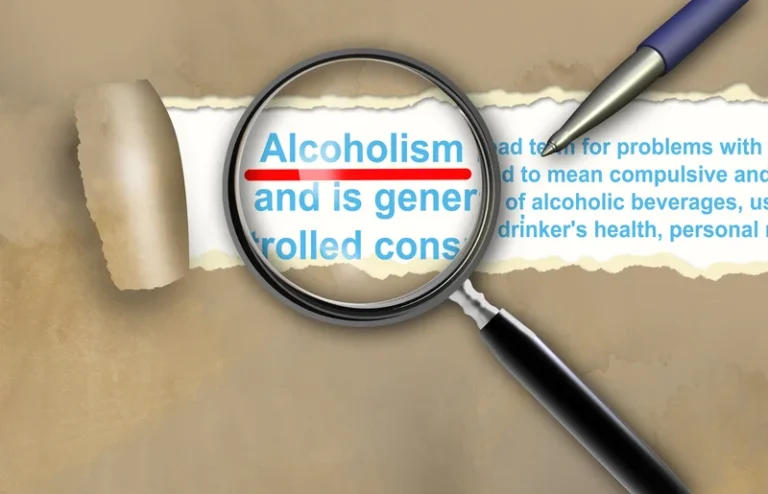
Mice that were exposed to drinking-in-the-dark exhibited motor incoordination during the 8th session but not during the 15th session compared with the mice that drank water only. We do not receive https://ecosoberhouse.com/ any commission or fee that is dependent upon which treatment provider a caller chooses. If you have alcohol dependence, it means that you have reached a point of needing alcohol to function.
Addiction vs Tolerance vs Dependence – Bottom Line
- One of the criteria used to determine an AUD diagnosis is that of alcohol tolerance.
- Alternatively, people may experience sensitivity to certain components of alcoholic drinks.2 This can mean reactions to preservatives such as sulfites, chemicals, grains, or histamines (a byproduct of fermentation).
- Firstly, some people have a genetic or metabolic inability to process alcohol — the reason for this is not precisely documented.
- But it is possible to reverse even a high alcohol tolerance in about a month.
In fact, alcohol intolerance can develop at any stage of life, and it’s something that can happen to anyone. Symptoms of alcohol intolerance can range from mild building alcohol tolerance (such as face reddening), to severe (anaphylaxis). Once an intolerance has developed, the only way to eliminate symptoms is to avoid alcohol altogether.
- In this mini-review, we provide a theoretical framework for alcohol tolerance.
- A high tolerance can be a symptom of an advanced alcohol use disorder, which can lead to many health-related and social implications and should be addressed immediately.
- Understanding the distinctions between addiction, tolerance, and dependence is crucial for accurate diagnosis and effective treatment.
- However, rats that received the same dose of alcohol 24 h later did not exhibit these behavioral or neuropharmacological effects.
Addiction Treatment Programs For Alcohol Abuse
According to these guidelines, the presence of two or three symptoms suggests a mild substance use disorder, while four or five symptoms indicate a moderate disorder. If a person exhibits six or more symptoms, it is classified as a severe substance use disorder, commonly referred to as addiction. What starts as a choice can quickly spiral into a situation where the individual feels powerless to stop, even in the face of severe consequences. Recognizing the signs of addiction is essential for distinguishing it from dependence and other related conditions. Understanding the distinctions between addiction, tolerance, and dependence is crucial for accurate diagnosis and effective treatment.
Signs Of A High Alcohol Tolerance
Developing a tolerance to many medications is actually considered to be a normal response. Tolerance can develop much more quickly if alcohol is always consumed in the same environment – for example, if you only drank at home during lockdown. In this scenario you may need to drink five pints to get the same initial “buzz” you got from four pints. But it can also develop with regular and continued alcohol use in social drinkers. Functional tolerance is when the brain functions of drinkers adapt to compensate for the disruption that alcohol causes in their behavior and their bodily functions.

Acute Tolerance
The transdermal technology detects and reports alcohol in real time based on emissions from a person’s skin. The system uses state-of-the-art detection hardware and reporting software to deliver immediate test results. While tolerance is observable during active drug use, withdrawal symptoms become evident in the hours or days following cessation. By slowly reducing the dose, patients can minimize withdrawal symptoms and ease the transition off the medication. Dependence is a common and natural outcome of using certain drugs over time, but it is important to distinguish it from addiction. While nearly everyone who uses opioids for an extended period will develop physical dependence, only around 3% to 19% of patients will develop an addiction.
Can You Build Up a Tolerance to Alcohol?
- Dependence develops after tolerance and often before addiction, though it is not always a precursor to it.
- Some people have slower variants of these enzymes, which has been linked to tolerance and dependence.
- Those with lower alcohol tolerances do not need to worry, but should still be aware of their limitations and drink appropriately if they choose to drink.
- If you have a developed an alcohol tolerance that you are ready to address, there are safe ways to lower it.
The drinker may appear to be more intoxicated in the early stages of the drinking session than near the end. In other words, if you have developed alcohol tolerance, you have to drink increasingly greater amounts of alcohol to feel the same effects you used to feel with fewer drinks. Like every other drug or compound, ethanol is metabolized by the liver and stomach, and the metabolism of ethanol in individuals varies.

Alcohol dependence can lead to a number of risks and damage, including permanent liver damage, addiction, and possibly fatal health complications. The helpline at AddictionResource.net is available 24/7 to discuss the treatment needs of yourself or a loved one. This helpline is answered by Legacy Healing Center, an addiction treatment provider with treatment facilities in California, Florida, Ohio, and New Jersey. A tolerance to alcohol can develop over the course of several weeks or months. Studies show that people who have genetically determined tolerance can be at higher risk for alcoholism if there’s a history of it in their immediate family. On average, women tend to achieve higher blood alcohol concentrations (BACs) than men after drinking the same amount of alcohol.
Treatment For Alcohol Abuse And Addiction

“Body size and composition are significant factors in alcohol detoxification and tolerance regardless of age,” says Dr. Schwartz. “Many [people who identify as] men tend to have larger bodies, which indicates more area to distribute alcohol in lowering the overall alcohol content. They also tend to have more muscle, which in turn leads to a higher water content, helping to dilute and diminish the effect of alcohol on the body. Also, some [people who identify as] women have less alcohol dehydrogenase, the enzyme that breaks down alcohol, leaving more alcohol in the bloodstream for longer periods of time.” This is why the U.S. Dietary Guidelines recommend keeping drinking habits to a minimum, which they define as no more than two drinks per day for men and one per day for women. The hypothermic effect of alcohol was attenuated after a second administration of the same dose 24 h later (Crabbe et al., 1979).


Tolerance to the effects of alcohol can influence drinking behavior and consequences in many ways. Addiction Resource is an educational platform for sharing and disseminating information about addiction and substance abuse recovery centers. Addiction Resource is not a healthcare provider, nor does it claim to offer sound medical advice to anyone. Addiction Resource does not favor or support any specific recovery center, nor do we claim to ensure the quality, validity, or effectiveness of any particular treatment center. No one should assume the information provided on Addiction Resource as authoritative and should always defer to the advice and care provided by a medical doctor.
This indicates that your body has learned how to metabolize the substance more efficiently. Alcohol works by manipulating natural chemicals in the brain called GABA (gamma-Aminobutyric acid). GABA is a chemical messenger in the brain, and it’s part of your body’s rest and digest system.

